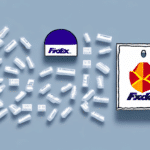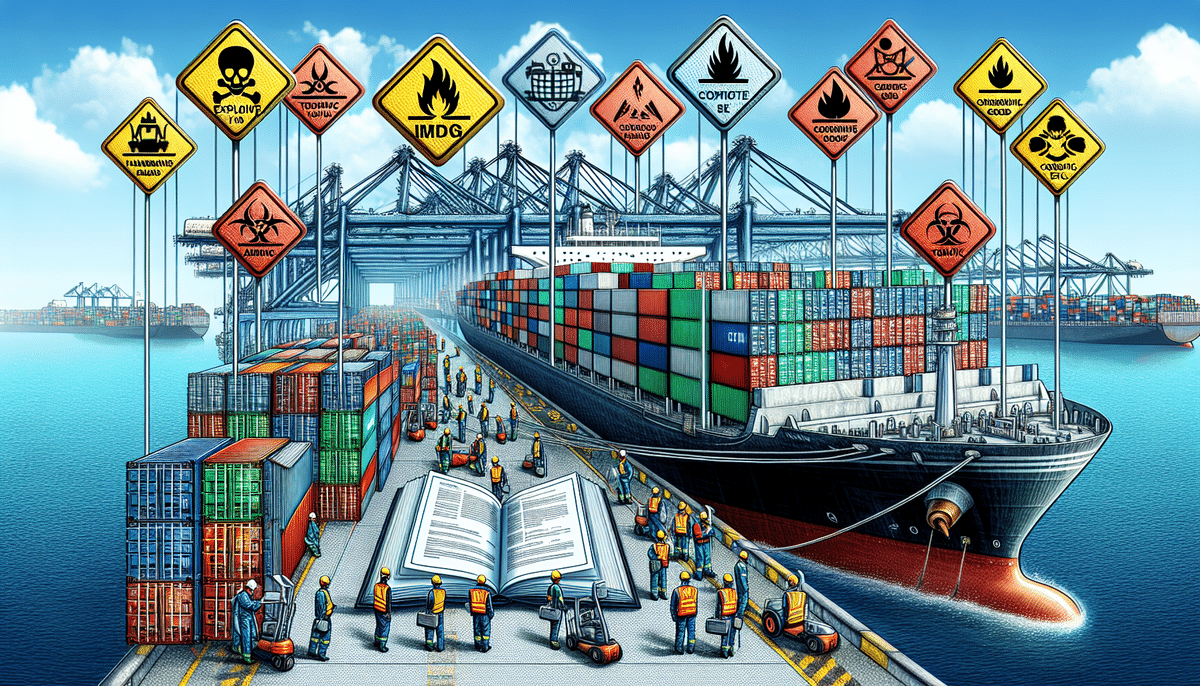How to Complete the FedEx Dangerous Goods Declaration Form on FedEx Ship Manager
Shipping hazardous materials requires strict compliance with various rules, regulations, and procedures. One of the key requirements for shipping hazardous materials is the completion of a Dangerous Goods Declaration Form. In this article, we will discuss the process of completing the FedEx Dangerous Goods Declaration Form on the FedEx Ship Manager platform.
Importance of a Dangerous Goods Declaration Form
The Dangerous Goods Declaration Form is a legal document that provides detailed information about the hazardous materials being shipped. It is a mandatory requirement for all shipments that contain hazardous goods. This document helps to ensure that the carriers, handlers, and customs officials involved in the shipping process are aware of the nature and the risks associated with the materials being transported.
- Prevents accidents and incidents during transportation by ensuring accurate information is provided.
- Identifies appropriate emergency response procedures in case of an accident or spillage.
- Ensures compliance with international regulations such as those set by the International Air Transport Association (IATA) and the International Maritime Organization (IMO).
Failure to comply with these regulations can result in legal penalties, fines, and even imprisonment.
Understanding Rules and Regulations for Shipping Dangerous Goods
International Standards
Before filling out the Dangerous Goods Declaration Form, it's essential to understand the regulations that govern the international transportation of hazardous materials. The IATA and IMO have established comprehensive regulations for air and sea transport, respectively. These regulations are periodically updated and detail specific requirements for handling, packaging, labeling, and documentation.
Country-Specific Regulations
Different countries may have their own regulations and restrictions on the transportation of dangerous goods. It's crucial to research and comply with these regulations to avoid legal or safety issues. Working with a qualified and experienced hazardous materials shipping company can help ensure that all regulations are followed and that your shipment arrives safely and on time.
Training and Education
Proper training and education are essential for anyone involved in the transportation of hazardous materials. Understanding the risks associated with different types of dangerous goods and the proper procedures for handling and responding to emergencies can prevent accidents and ensure regulatory compliance.
FedEx Dangerous Goods Declaration Form Overview
The FedEx Dangerous Goods Declaration Form is a comprehensive document that requires specific information about the materials being transported. The form consists of three parts:
- Shipper and Recipient Information: Details about the shipper and the recipient.
- Transportation Company Information: Information about the carrier, including mode of transportation and contact details.
- Dangerous Goods Checklist: A checklist of the hazardous goods being shipped, including proper shipping names, UN or ID numbers, hazard classes, packing groups, and quantities.
Completing this form accurately is legally required and essential for the safe transportation of hazardous materials. Additional permits, licenses, and documentation may be necessary depending on the type of material being shipped.
Step-by-Step Guide to Completing the Form
- Download the Form: Obtain the latest version of the form from the FedEx website.
- Fill in Shipper and Recipient Information: Enter the shipper’s and recipient's names, addresses, and contact information in Part 1.
- Complete Transportation Information: In Part 2, provide the mode of transportation, number of packages, total gross weight, and carrier contact information.
- Detail Hazardous Materials: In Part 3, check the appropriate boxes for the hazardous materials, and provide detailed information such as proper shipping name, UN/ID number, hazard class, packing group, and quantity.
- Attach Supporting Documentation: Include Safety Data Sheets (SDS) or any other required permits.
- Sign and Date: Ensure that both the shipper and the transportation company sign and date the form.
- Submit the Form: Attach all necessary documents and submit the completed form to FedEx as per their guidelines.
Accurate completion of the form is crucial to avoid fines, delays, and legal consequences. Consulting with a hazardous materials expert or referring to the Federal Aviation Administration (FAA) Dangerous Goods Regulations can provide additional guidance.
Ensuring Accuracy and Completeness
Double-Check Information
Verify all information provided on the form, including proper shipping names, classifications, and quantities of hazardous materials.
Clear Documentation
Use clear and legible handwriting, avoiding abbreviations or acronyms that may cause confusion.
Attach Required Documents
Ensure that all necessary supporting documents, such as SDS or permits, are attached to avoid delays and issues during customs clearance.
Proper Packaging and Labeling
Use appropriate packaging that meets regulatory standards and label all packages with the necessary hazard labels and markings to indicate the nature of the hazardous materials.
Common Mistakes to Avoid
- Providing incomplete or incorrect information about the hazardous materials being shipped.
- Using outdated versions of the form.
- Failing to attach necessary supporting documents or providing insufficient information on those documents.
- Inaccurate labeling or improper packaging of hazardous materials.
Errors on the Dangerous Goods Declaration Form can lead to severe consequences, including legal and financial repercussions. Taking the time to carefully and accurately complete the form is essential for compliance and safety.
Proper Packaging and Labeling
The packaging and labeling of hazardous materials are critical for safety during transportation. Proper packaging prevents leaks, spills, and damage, while accurate labeling provides essential information about the hazards and necessary precautions. Ensure that packaging meets regulatory standards and that all packages are clearly labeled with the appropriate UN number and hazard symbols.
Safe Handling and Transport Tips
- Follow proper procedures for packaging, labeling, and completing the Dangerous Goods Declaration Form.
- Provide thorough training for employees and handlers involved in transporting hazardous materials.
- Label all packages with the correct UN number and hazard symbols.
- Avoid mixing incompatible materials during transport.
- Ensure compliance with all relevant regulations and guidelines.
- Monitor and track shipments to ensure safe delivery.
Frequently Asked Questions
- Who is responsible for completing the Dangerous Goods Declaration Form?
The shipper is responsible for completing the Dangerous Goods Declaration Form.
- What are the consequences of not completing the Dangerous Goods Declaration Form correctly?
Incorrect completion can lead to delays, fines, and even criminal charges if safety violations occur during transport.
- What happens if I need to make changes to the form after submission?
Contact FedEx immediately to make any necessary changes to the form.
Additional Resources and Training
For more information or training on properly shipping dangerous goods with FedEx, visit the FedEx Ship Manager page or consult the IATA Dangerous Goods Regulations and the IMO Dangerous Goods Guidelines.
Best Practices for Regulatory Compliance
- Stay updated with the latest regulations from authorities like IATA, IMO, and relevant national bodies.
- Implement a compliance management system to track and manage hazardous materials shipments.
- Conduct regular training sessions for staff involved in handling and shipping hazardous materials.
- Regularly review and audit shipping processes to ensure ongoing compliance.
Conclusion: Ensuring Safe and Compliant Shipping of Hazardous Materials
Shipping hazardous materials requires meticulous planning, preparation, and adherence to strict regulations. Completing the Dangerous Goods Declaration Form accurately is vital for the safe handling and transportation of these materials. By following the guidelines outlined in this article and utilizing the available resources, you can ensure compliance and the safe transport of hazardous materials with FedEx.






















